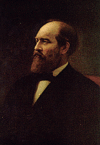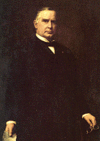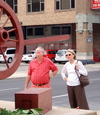Philip Roth had a long essay in the Sunday New York Times book review section. The subject was his new novel, a sort of reimagining of American history if the isolationist, anti-semitic Hitler apologist Charles Lindbergh had been elected president in 1940 instead of Franklin D. Roosevelt. Most of the piece is an explanation of the book’s origins and an exploration of method. But he takes a detour near the end to puncture our most comforting national myth: That the purity of our devotion to freedom has made us somehow indestructible, immune from history:
“History claims everybody, whether they know it or not and whether they like it or not. In recent books, including this new one, I take that simple fact of life and magnify it through the lens of critical moments I’ve lived through as a 20th-century American. I was born in 1933, the year Hitler came to power and F.D.R. was first inaugurated as president and Fiorello La Guardia was elected mayor of New York and Meyer Ellenstein became the mayor of Newark, my city’s first and only Jewish mayor. As a small child I heard on our living room radio the voices of Nazi Germany’s Fuhrer and America’s Father Coughlin delivering their anti-Semitic rants. Fighting and winning the Second World War was the great national preoccupation from December 1941 to August 1945, the heart of my grade school years. The cold war and the anti-Communist crusade overshadowed my high school and college years as did the uncovering of the monstrous truth of the Holocaust and the beginning of the terror of the atomic era. The Korean War ended shortly before I was drafted into the Army, and the Vietnam War and the domestic upheaval it fomented — along with the assassinations of American political leaders — clamored for my attention every day throughout my 30’s.
“And now Aristophanes, who surely must be God, has given us George W. Bush, a man unfit to run a hardware store let alone a nation like this one, and who has merely reaffirmed for me the maxim that informed the writing of all these books and that makes our lives as Americans as precarious as anyone else’s: all the assurances are provisional, even here in a 200-year-old democracy. We are ambushed, even as free Americans in a powerful republic armed to the teeth, by the unpredictability that is history. May I conclude with a quotation from my book? ”Turned wrong way round, the relentless unforeseen was what we schoolchildren studied as “History,” harmless history, where everything unexpected in its own time is chronicled on the page as inevitable. The terror of the unforeseen is what the science of history hides, turning a disaster into an epic.’
“In writing these books I’ve tried to turn the epic back into the disaster as it was suffered without foreknowledge, without preparation, by people whose American expectations, though neither innocent nor delusional, were for something very different from what they got.”







